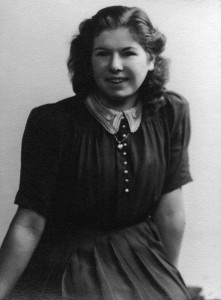
Today, 16 August, is the date in 1945 when many in the Far Eastern prisoner of war camps were released. Most of the men had been POWs for 3 ½ years. Of the 60,000 who were forced to work on the notorious Thailand-Burma Railway, over 12,000 never returned. A shattering statistic. In other parts of the Greater East Asia Co-Prosperity Sphere the death toll was even higher. In all, 130,000 prisoners of war and the same number of civilians were held captive. The story of their plight is well documented in books, films, broadcasts and newspapers. Some of their tales are truly harrowing. Less often does one read about reconciliation between the former prisoners and the Japanese. However, today I was reminded of one man who, despite suffering appallingly, forgave his captors.
I first met Bill Drower, or Captain William M. Drower to give him his full name, when I was researching the biography of my grandfather, Philip Toosey, which appeared in 2005 as The Colonel of Tamarkan: Philip Toosey and the Bridge on the River Kwai. I had been out in Thailand with my mother to see the bridge over the river Kwai, the camps where Toosey had been senior British officer and to talk to some of the prisoners who had been in captivity with him. When I got home there was an envelope on my desk with spidery writing. I opened it and read the first sentence which began: ‘My dear Miss Summers, My name is William Mortimer Drower and your grandfather was kind to me when I got into a spot of bother in the camp gaol…’
I knew the story of Bill Drower’s imprisonment, of course I did. Anyone who has read about the railway knows that he fell out with one the guards in the officers’ camp in May 1945, only to be hauled up in front of the psychotic camp commander, Noguchi, and condemned to spend the rest of his life in a hole in the ground. For 77 days he lay in solitary confinement, quietly losing his mind, being fed on just one rice ball a day. Once he woke to find a rat gnawing at his foot. On 16 August 1945 the camp at Kanchanburi was liberated and Bill Drower was dragged out of his prison, more dead than alive. He was suffering from Blackwater fever and was delirious. Some ‘spot of bother’. Amazingly he recovered and the next time my grandfather saw him was in London six months later, when Bill was physically restored to his spectacular 6’3” frame.
Fifty years later Bill was invited to go on a reconciliation mission to Japan. He agreed on one condition: that he would be allowed to give a speech in Japanese. He had worked at the Japanese Embassy in London in the 1930s and spoke the formal, honorific form of the language. As a translator on the railway he was expected to speak informal Japanese, the language accorded to the lowest in society. His wish was granted and he gave a speech, in honorific Japanese, in Tokyo. It went down extremely well. As a sign of respect and gratitude to this great and humble man, the Japanese hosts offered Bill a trip on the Bullet Train, which he accepted with alacrity. He was chatting to the guide and translator about the train and learned from them that the bullet train had been designed by one of their most famous railway engineers.
The guide continued:
‘This engineer designed a railway in Thailand in the Second World War.’
‘I know,’ replied Bill, ‘I helped him to build it.’
Bill Drower was one of the most impressive men I have had the privilege to meet in the whole of my life. I think of him often, and especially today, on the 68th anniversary of his release from imprisonment.





